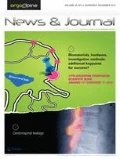Abstract
Penetrating Spinal Cord Injuries are often complicated by Cerebrospinal Fluid (CSF) leaks, which can be diagnosed either at initial presentation, or present themselves in a delayed fashion. Symptoms are usually non-specific and include positional headaches, nausea, vomiting, vertigo, and may even include hypotension, cranial nerve palsies, and in severe cases, meningitis. Imaging to detect CSF leaks include: plain radiographs, CT and MRI, CT-myelogram, radionuclide cisternograms, MRI with intrathecal gadolinium. Initial treatment of CSF leaks is conservative, including bedrest, hydration/overhydration, and medications such as caffeine and theophylline. Although overall treatment protocols are controversial, there seems to be a consensus that if a CSF leak persists for over 96 hours, it should be surgically treated, as it would inevitably increase the risks of pseudomeningocele formation and meningitis. Surgical options include a blood/fibrin patch, the placement of a lumbar drain, and ultimately surgical exploration and primary closure of the dural defect.
Similar content being viewed by others
References
Shahlaie K, Chang DJ, Anderson J (2006) Nonmissile penetrating spinal injury. J Neurosurg Spine 4: 400–408.
Peacock WJ, Shrosbree RD, Key AG (1977) A review of 450 stab wounds of the spinal cord. S Afr Med J 961–964.
Yilmaz N, Kiymaz N, Mumcu C, Demir I (2009) Penetrating spinal injury: reports of two cases. Turk J Trauma Emerg Surg 15(1): 91–94.
Kulkarni A, Bhandari M, Stiver S, Reddy K (2000) Delayed presentation of spinal stab wound: case report and review of literature. J Emerg Med 18(2): 209–213.
Johnson DB, Brennan P, Toland J, et al. (1996) Magnetic resonance imaging in the evaluation of cerebrospinal fluid fistulae. Clin Radiol 51: 837–841.
Kerr, JT, Chu FW, Bayles S (2005) Cerebrospinal fluid rhinorrhea: diagnosis and management. Otolaryngol Clin 38: 597–611.
Goyal R, Goyal N, Salunke P (2009) Non-missile penetrating spinal injuries. Indian J Neurotrauma 6(1) 81–84.
Karlins NL, Marmolya G, Snow N (1992) Computed Tomography for the evaluation of knife impalement injuries. Case report. J Trauma 32: 667–668.
Moyed S, Shanmuganathan K, Mirvis ST, et al. (1999) MR imaging of penetrating spinal trauma. Am J Roentgenol 173: 1387–1391.
Stone JA, Castillo M, Neelon B, et al. (1999) Evaluation of CSF leaks: high resolution CT compared with contrast enhanced CT and radionuclide cisternography. AJNR Am J Neuroradiology 20: 706–712.
Flynn BM, Butler SP, Quinn RJ, et al. (1987) Radionuclide cisternography in the diagnosis and management of CSF leaks: the test of choice. Med J Aust 146: 82–84.
Aydin K, Terzibasioglu E, Sencer A, et al. (2008) Localization of cerebrospinal fluid leaks by gadolinium-enhanced magnetic resonance cisternography: a 5-year single-center experience. Neurosurgery 62(3): 584–589.
Eismont FJ, Wiesel SW, Rothman RH (1981) Treatment of dural tears associated with spinal surgery. J Bone Joint Surg Am 63: 1132–1136.
Faulkner N., Finn M, Anderson P (2012) Hydrostatic Comparison of nonpenetrating titanium clips versus conventional suture for repair of spinal durotomies. Spine (Phila PA 1976) 20: 37(9) E535–E539.
Black P (2002) Cerebrospinal fluid leaks following spinal surgery: use of fat grafts for prevention and repair. Technical note. J Neurosurg 96: 250–252.
Wang JC, Bohlman HH, Riew KD (1998) Dural tears secondary to operations on the lumbar spine. Management and results after a two-year-minimum follow-up of eighty-eight patients. J Bone Joint Surg Am 80: 1728–1732.
Preul M, Campbell P, Garlick D, Spetzler R (2010) Application of a new hydrogel dural sealant that reduces epidural adhesion formation: evaluation in a large animal laminectomy model. J Neurosurg Spine 12: 381–390.
Kim K, Wright N (2011) Polyethylene glycol hydrogel spinal sealant (Duraseal Spinal Sealant) as an adjunct to sutured dural repair in the spine. Spine (Phila PA 1976) 36(23): 1906–1912.
Epstein N (2010) Dural repair with four spinal sealants: focused review of the manufacturers’ inserts and the current literature. Spine J 10: 1065–1068.
Terasaka S, Hida K, Iwasaki Y (2003) Experimental and clinical evaluation for the use of the bioabsorbable dural substitute. Sekitsui Sekizui J 9: 23–27.
Shibayama M, Mizutani J, Takahashi I, et al. (2008) Patch technique for repair of a dural tear in microendoscopic spinal surgery. J Bone Joint Surg 90-B: 1066–1067.
Shimada Y, Hongo M, Miyakoshi N, et al. (2006) Dural substitute with polyglycolic acid mesh and fibrin glue for dural repair: technical note and preliminary results. J Orthop Sci 11: 454–458.
Gazzeri R, Neroni M, Alfieri A, et al. (2009) Transparent equine collagen biomatrix as dural repair. A prospective clinical study. Acta Neurochir 151: 537–543.
Author information
Authors and Affiliations
Corresponding author
Additional information
John Styliaras completed his undergraduate studies at Loyola University Chicago, with a BS in Biology and BA in Political Science. He continued his studies at Georgetown University School of Medicine in Washington DC, where he earned his Medical Degree and a Masters of Science in Biophysics and Physiology. John Styliaras was awarded the Jesuit Award for Leadership and Service by the Dean of Georgetown’s School of Medicine.
His main area of interest is spinal surgery and functional neurosurgery, and is an active member of the American Association of Neurological Surgeons (AANS) and Congress of Neurosurgeons (CNS). John Styliaras is currently training in neurosurgery, as a resident in the department of Neurological Surgery of Thomas Jefferson University Hospital in Philadelphia.
Rights and permissions
About this article
Cite this article
Styliaras, J.C., Dalyai, R., Amgad, H. et al. Cerebrospinal fluid leaks from penetrating injuries: diagnosis and treatment. ArgoSpine News J 24, 183–187 (2012). https://doi.org/10.1007/s12240-012-0062-x
Published:
Issue Date:
DOI: https://doi.org/10.1007/s12240-012-0062-x




